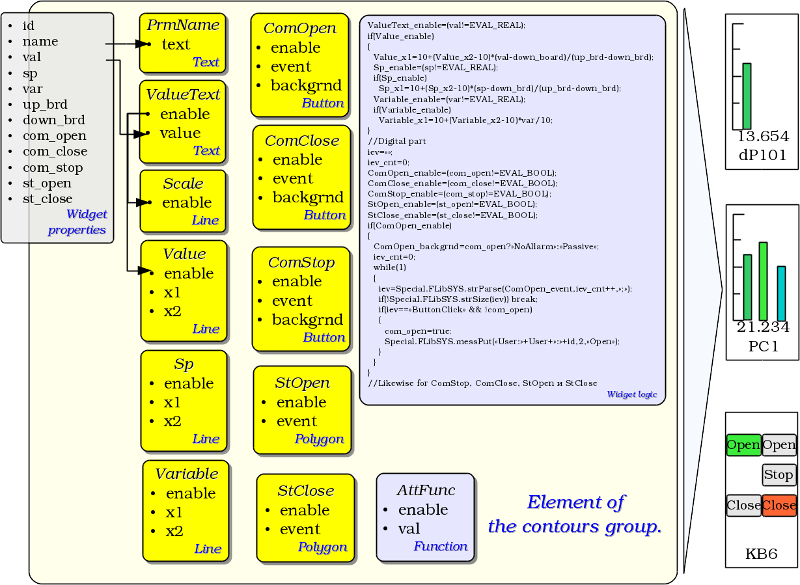Frames and elements of the visualization (widgets)
Frame is the window, which directly provides information to the user in graphical or text form. The group of interconnected frames creates whole user interface of VC.
Content of the frame forms from the visualization elements (widgets). Widgets may be the basic primitives (different elementary figures, text, trend, etc.) and derivative, formed from the basic or other derivative widgets. All widgets are grouped by libraries. In the process of the work, the user can create his own libraries of derivative widgets.
Actually the frame itself is also a widget that is used as a final element of visualization. This means that the widget libraries can store the blanks of frames and the templates of the resulting pages of the user interface.
Frames and widgets are passive elements that do not normally contain links to the dynamics and other frames, but only provide information about the properties and the nature of the dynamics (configuration), connected to the properties. Activated frames, i.e. containing links to the dynamics and active connections, form the user interface and are stored in the projects. In some cases, it is possible the direct appointment of the dynamics in the blanks of frames.
Derivative frames/widgets can contain included widgets, which can be glued-linked of one another with the logic by the user programming language of OpenSCADA.
The widget is an element through which the following is provided:
- visualization of operational and archive information about TP;
- alarming about violations of conduction the TP;
- switching between the frames of TP;
- control of the technological equipment and the parameters of conduction the TP.
Setting and linkage of the widgets is done through their properties. Parent widget and the widgets it contains, can be complemented by user properties. Then, the user and static attributes, are associated with the properties of included widgets by internal logic. To show the dynamics (current and archived data), properties of the widgets are dynamized, that is linked with the attributes of the parameters of OpenSCADA or properties of other widgets. Using, for linking nested widgets by internal logic, the user programming language of OpenSCADA relieves the issue of implementing a complex visualization logic, thus providing high flexibility. Practically, you can create fully dynamized frames with complex interactions at the user level.
